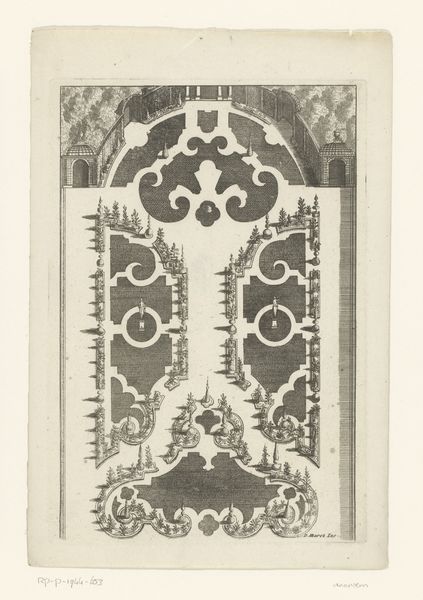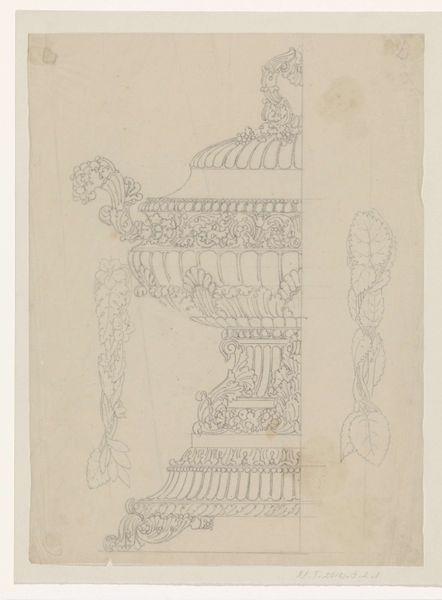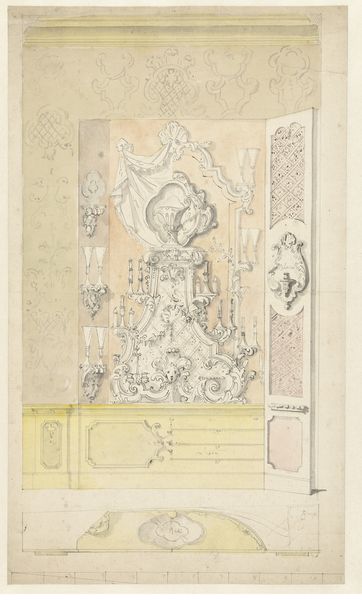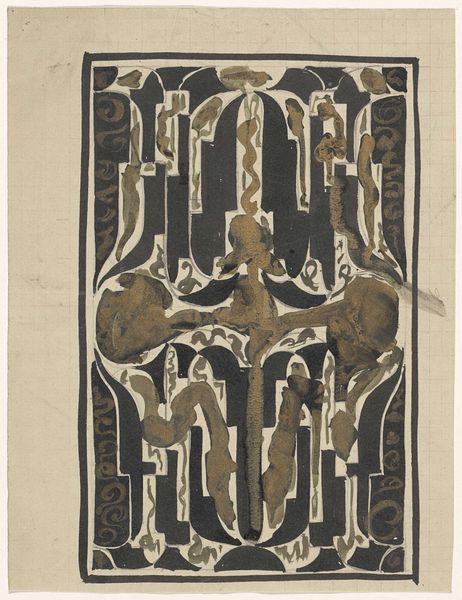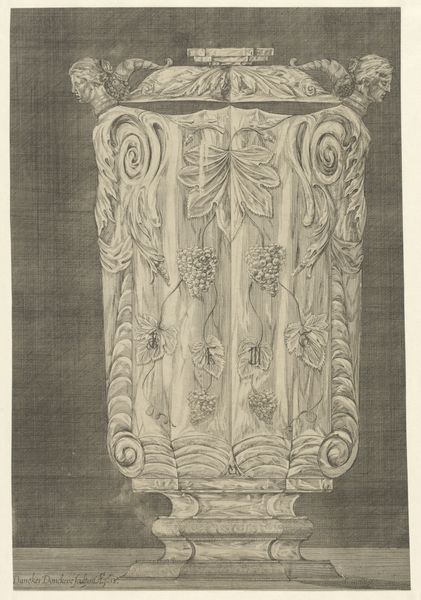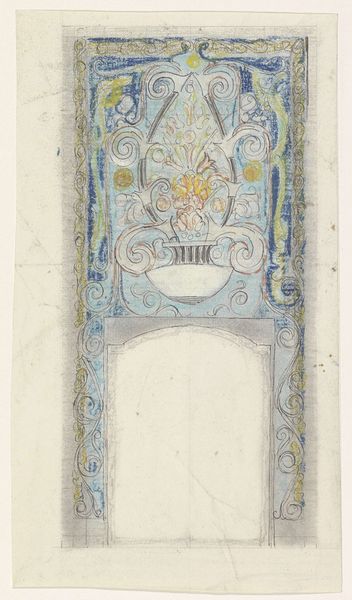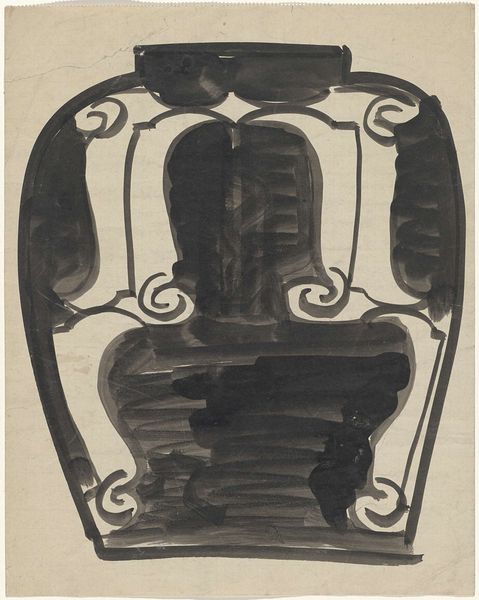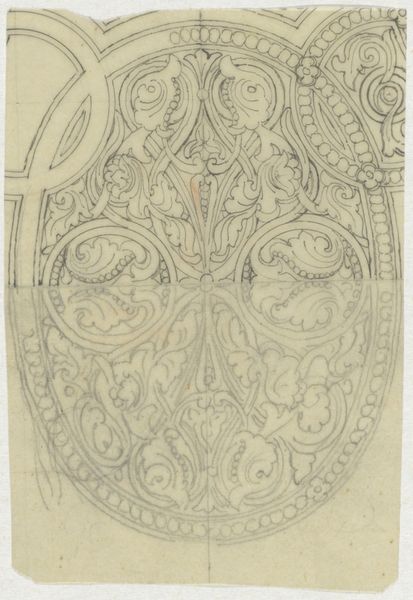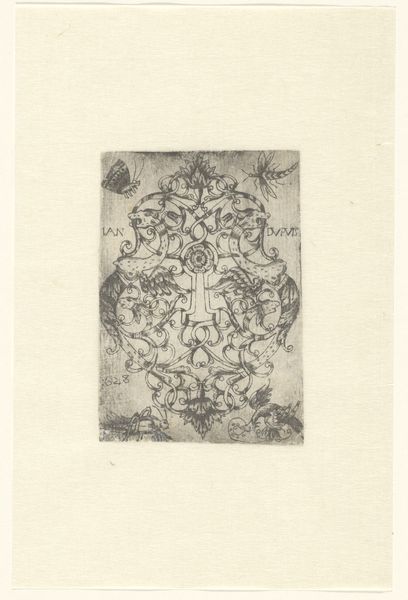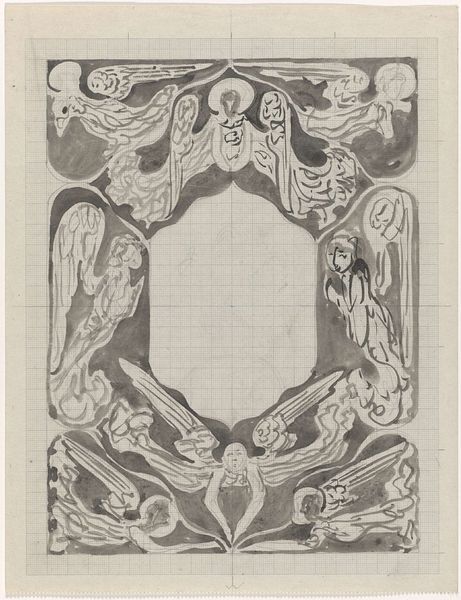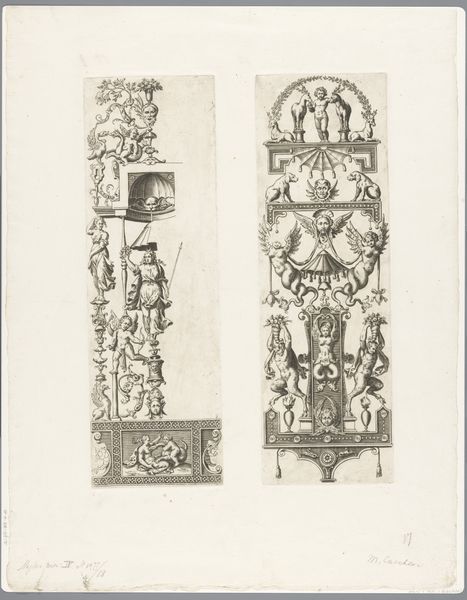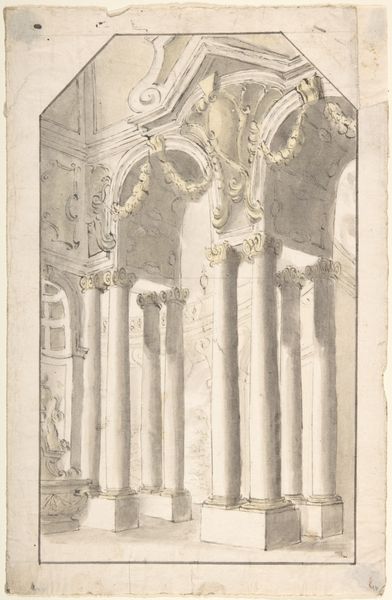
drawing, paper, ink
#
drawing
#
art-nouveau
#
linocut
#
pencil sketch
#
etching
#
paper
#
ink
#
linocut print
#
geometric
#
watercolor
Dimensions: height 365 mm, width 200 mm
Copyright: Rijks Museum: Open Domain
Curator: Let's explore this artwork by Carel Adolph Lion Cachet. It's entitled "Decoratieve ontwerpen met zittende figuren" and dates from sometime between 1874 and 1945. It seems to be rendered in ink on paper. Editor: It feels like a ghost! A spectral design hovering just on the edge of legibility. I'm immediately drawn to the balance of rigid geometric forms with fluid, organic shapes. It seems quite deliberate. Curator: Absolutely. The interplay between the geometric grid and the organic motifs speaks directly to the Art Nouveau aesthetic, especially the exploration of natural forms rendered through careful control of the materials at hand. I am particularly interested in the interplay between the pencil sketch, watercolor and what seems to be a linocut style. The juxtaposition of these techniques adds visual depth. Editor: Do you find the symmetry confining? To me, it speaks of the societal constraints placed upon the decorative arts during this period; functional object elevation and how it serves or subverts cultural frameworks. These symmetrical patterns were pervasive and perhaps intended for a similarly formatted end. Curator: It is suggestive, but perhaps in the direction of refinement, and also possibly toward new aesthetic boundaries in art. The visual rhythm created through repetition and controlled deviation certainly evokes deeper contemplation and formal appreciation of design elements. It really is about decoding the forms! The figures appear static, posed perhaps within some idealized garden, rendered flatly but full of suggested light through the delicate brushwork. Editor: That contrast is indeed striking, the blend of the avant-garde and tradition perhaps encapsulates the social and political spirit of the fin de siècle art world perfectly. The interplay between the constraints of decorative pattern and hints of pictorial space presents a very strong artistic message. Curator: Yes, an aesthetic crossroads if you will. By drawing on historical design and simultaneously engaging with it to establish itself in new artistic and social possibilities of expression, Cachet offers a new way of seeing tradition and novelty through his linework. Editor: Thank you. A very insightful discussion, bringing us both the beautiful forms of art, and to how art serves to mirror larger cultural conversations within different frames.
Comments
No comments
Be the first to comment and join the conversation on the ultimate creative platform.
